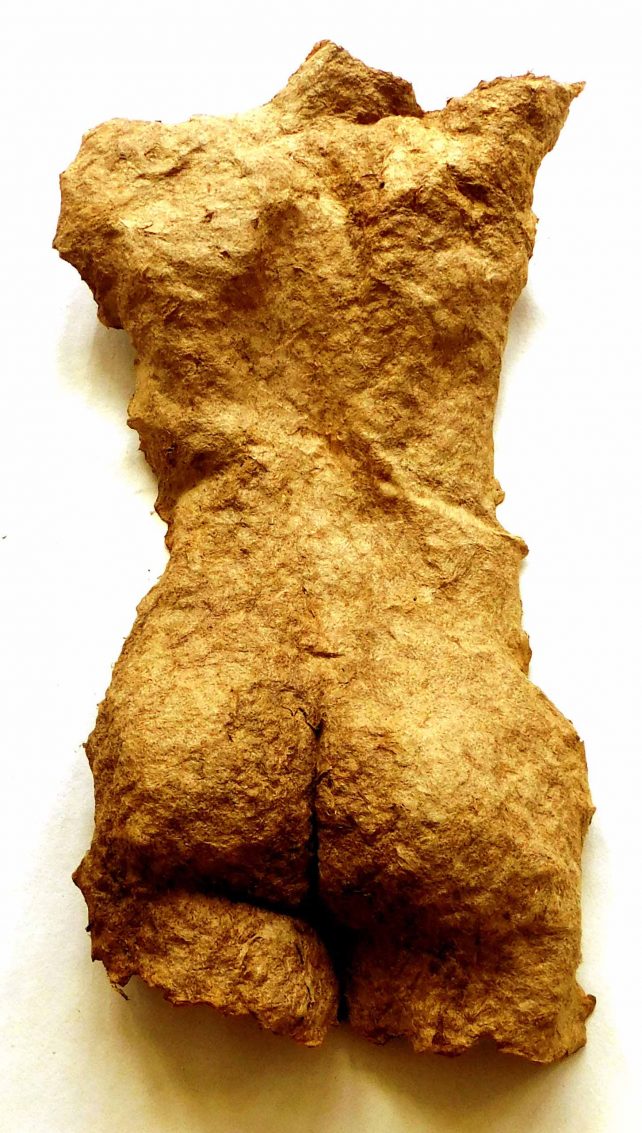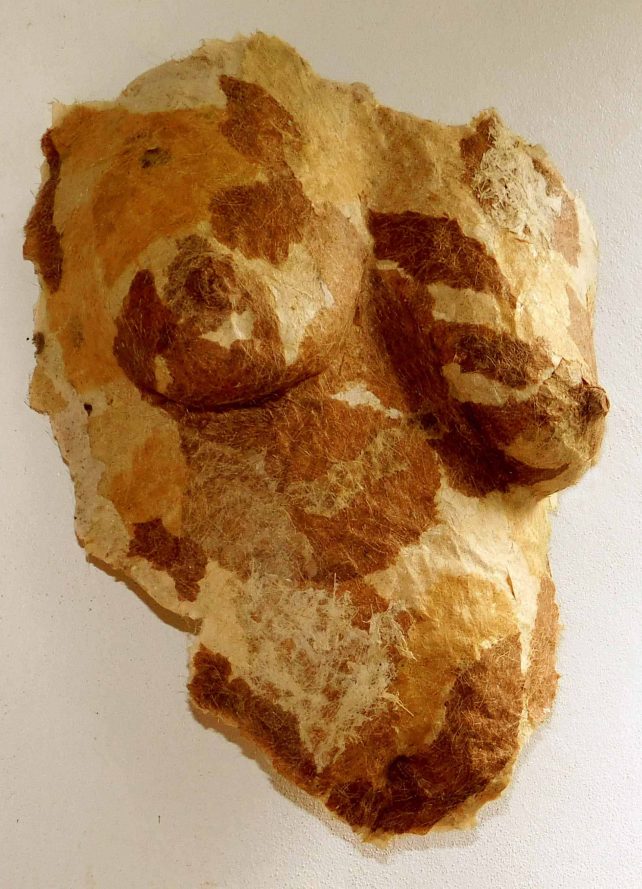
I doubt that there can be an equivalent area of land in the world that has the creative potential of Dominica. Our resources are the envy of other countries but we disregarded our uniqueness.
But how can it be otherwise when creative subjects are neglected in our schools and colleges. By definition creativity is something different to what has gone before, rather than repeating the same as what has gone before.
My life’s work as an artist and engineer has been dependent on thinking and creating differently. Never has this been truer than in the fifteen years that my work has been based here. As an engineer I spend much of my time making things made in the Far East work in Dominica. As painter and sculptor I have had to create new materials and devise different ways of working.
Rather than importing expensive art paper from overseas, I make my own high quality paper from Dominica’s abundant but discarded natural resources: banana stems, sugarcane bagasse, pineapple leaves, palm fronds, etc. All these raw materials grow in profusion right outside my studio door. I made the equipment needed for converting cellulose rich flora into paper right here in my workshop. The machine that I use for beating the raw material into paper pulp is based on a design from 300 years ago.
My collection of handmade papers covers hundreds of different weights, colours and textures, and with sheet sizes up to 22” x 24”. The papers are particularly suited for pastel and print making. From old cotton rags I can make a white paper suitable for watercolours.
Incidentally, the potential of the banana plant is not just limited to making paper. Elsewhere in the world the fine fibres within the stem are spun into a thread more valuable than silk and the courser fibres are used to reinforce car tyres.

The materials and processes that I use in my work as a sculptor date back to the time of Michelangelo: clay, plaster and bronze. In Dominica clay is readily available but specialist plasters and the means of casting in bronze are not. These limitations have meant that since locating my studio to Dominica I have not been able to take any of my sculptures through to a final form.
To solve my sculptural dilemma my mind again turned to the amazing strength, texture and colours of handmade paper. I have now found ways of casting paper pulp and taking an impression directly from an original clay sketch. The fibres within the plants I use give the resulting sculpture its colour, texture, strength and permanence. A life-size figure weighs only a few pounds and can be made at a fraction of the cost of a sculpture in bronze. Furthermore, I am able to work from my initial clay sketch, the speed and spontaneity of which is essential in capturing my models moods and changes.
The life-size torsos that illustrate this commentary show the unique effects that can be achieved. Thanks to Dominica’s natural resources I can now add a new dimension to sculptures in my series, Daughters of the Caribbean Sun.
I welcome visitors to my studio to view work in progress but please email or text me in advance to arrange a mutually convenient date (Email: [email protected] or text: 225-5470/615-5010). Dominicans residing overseas can follow my work at: sculpturestudiodominica.blogspot.com
Roger Burnett
Antrim
29th February 2020
Furthermore, creating a life-size figure in bronze is expensive and time consuming: over a year’s labour and at a cost of more than a new coaster bus. Mind you, within a few years the new coaster bus will be in the scrap yard whereas a bronze figure will be around for many a millennium and become more valuable with the passing of time.

Mr. Burnett, continue to soldier on despite the general lack of appreciation for fine arts in Dominica. You are an inspiration. I hope to visit your studio some day.
Awesome work of art.
Great stuff! I will contact you and visit soon.
absolutely beautiful. art should be part of our curriculum.